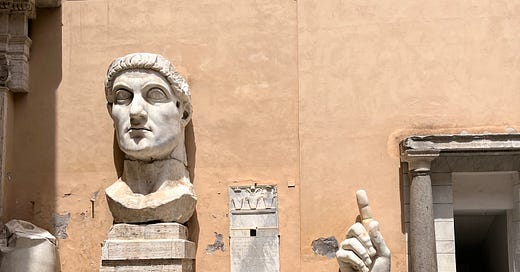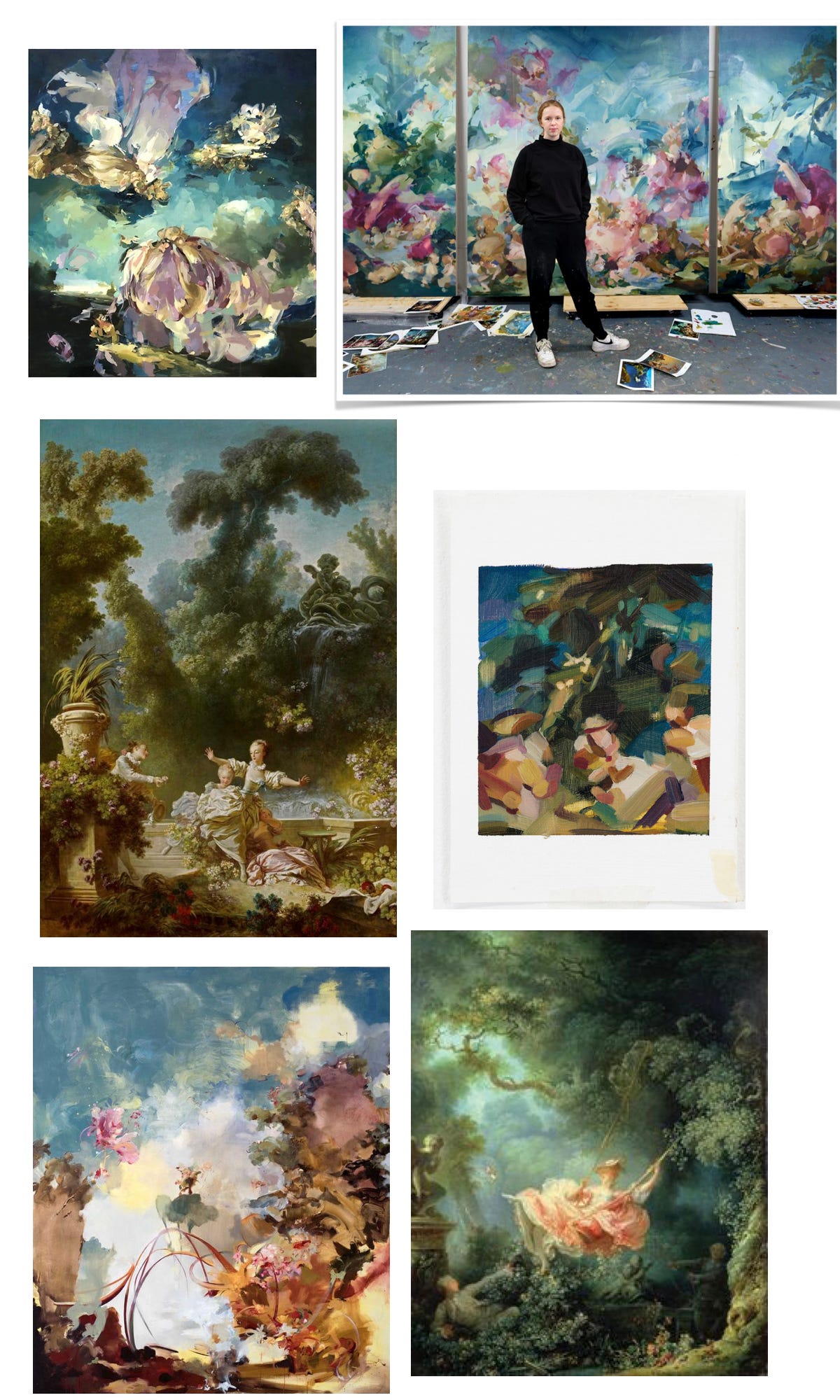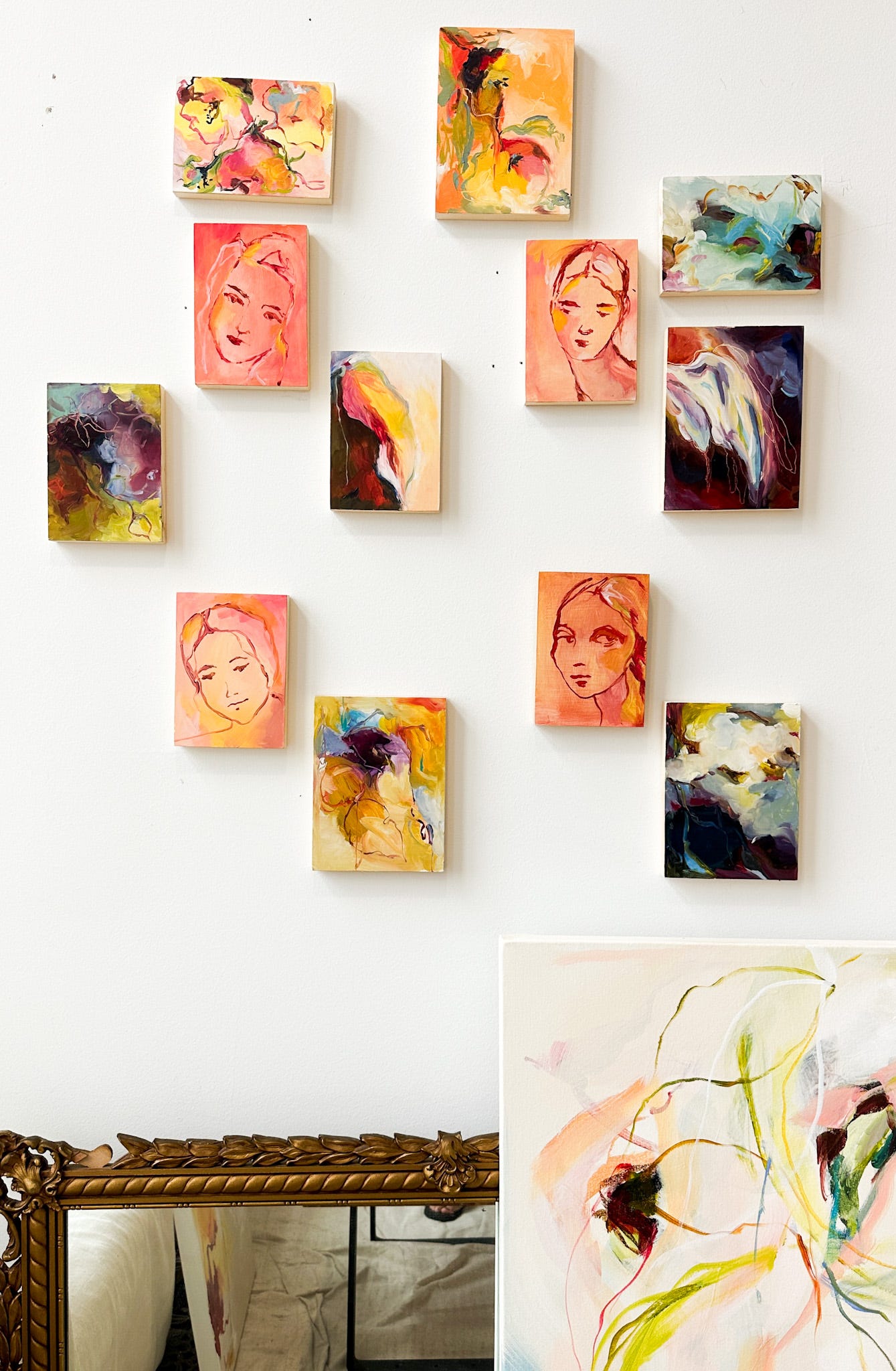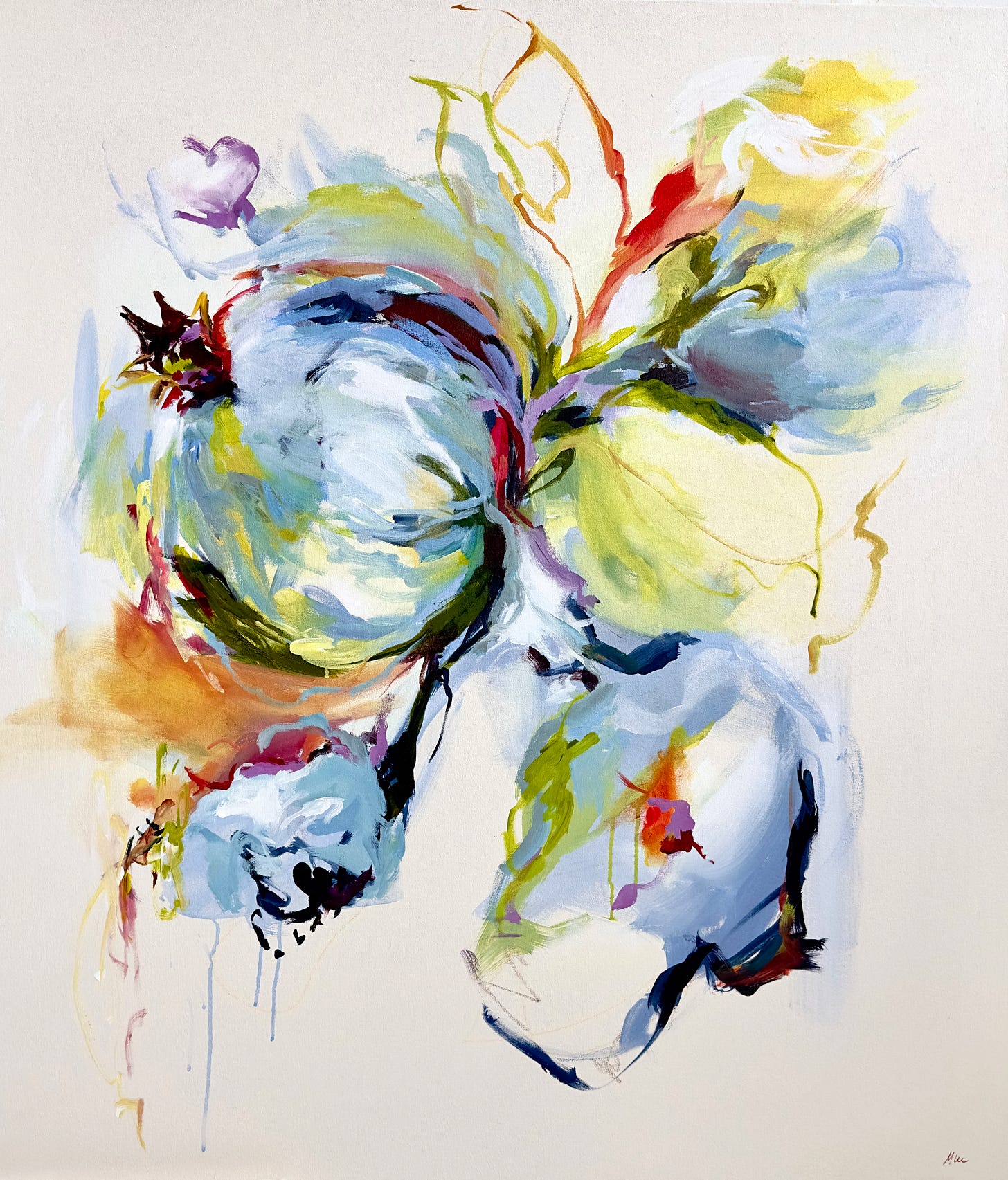Today, I'd like to feature some further insights I have noticed as I explore different ways an artist can "enter into a body of work."
Artists have borrowed concepts, ideas, and even color palettes from others for some time; it isn't a new idea by any means. Often, we see it in movements where artists are playing off each other's ideas in real time. i. e. Fauvism or Pointalism.
I wonder if a real-time movement is happening for contemporary artists as they use Old Masters's work as their "WAY IN." I think this is possible as I have had to whittle this artist list to make this article concise.
When I have been teaching classes, I consistently share these slides that I put together of two artists I admire. These women have brought their talent, observational, and intellectual skills interestingly in response to the work of Old Masters.
I am taken not only by the reinvention of classical compositions in her abstract work but also by her artwork's underlying motivations.
The old masters have become my unlikely allies in shining a light on gender imbalances that afflict civilization today and indeed that threaten the environment and continued existence on the planet. I didn't set out to become a feminist artist. I set out to be a visual artist and I ran into roadblocks. I realized these were related to the way women were being depicted in many of the canonical artworks I was looking at as well as in television, commercial cinema, and print media. The veil of misogyny in the art world, academia, and popular culture is subtle, invisible, pervasive and nebulous. As such, it is impossible to pierce. By contrast, old master images are stationary, definite objects. They hold still long enough to be transformed.
Flora is a rising star, and I can see why. I first discovered her when she was an artist in residence in Venice with the Victoria Miro Gallery. This is a beautiful video of her in Venice, where she describes the impact of seeing all this work in person daily. (Talk about a dream come true!)
https://online.victoria-miro.com/florayukhnovich/
In her own words:
I had been painting for a few years at this point without really considering that painting is an odd, archaic thing to do. I had to acknowledge that paint and canvas already carry a huge amount of art historical freight. Painting in its very nature references the past, so it felt right to explicitly borrow from art history.
I particularly like this interview with Flora as she discusses the use of pink and femininity:
My work is about taking decorative languages, which are apparently superficial, considered 'icing on the cake', and thinking about how to draw out the substance. Using the natural bodiless of painting is often my way of doing that because it's universal – we all live in a body.
Both women respond to the works of old Masters with their own authentic type of feminism and mark-making.
Responding to Old Masters's work is something I have not set out to do, but in retrospect, as I respond to the work I saw in Italy, I feel like this “way in” is taking hold of me in one way or another.
Here is a peek at some images I added to my mood board in my studio of the art that I saw at the Uffizi Gallery in Florence and the Capitoline Museums in Rome.
Who are these women, I asked myself, and why do they only seem to fall into three categories: saints, sensual mythological females, or temptresses? They certainly aren't shown young women on the cusp of their femininity as sisters, cousins, or even daughters.
In the studio, I felt compelled to paint some young faces with wings and flower crowns and let them rest a bit. It seemed initially like folly, but as an artist, intuition and spirit take over when we are at our best. I have to allow myself to paint things that don't necessarily "make sense" on my path, but sometimes that's when doors open for me.
I went on to complete this piece, which I titled "Blue Pomegranate."
In ancient Greece and Rome, the pomegranate symbolized fertility with its many seeds and had a strong association with the Goddess of Love, Aphrodite. Later, Renaissance artists (or someone in charge of these things) changed the symbolism to resurrection and everlasting life.
To me, it feels ripe and ready for a new identity. Possibly, that’s why it needed to be blue ;)
Finally, I love this quote from Elise Ansel:
The artist to artist dialogue, however, is deeper and more mysterious than this. Some people say there is an unconscious dialogue between all artists living and dead. My own experience is that the old masters are a friendly presence in the studio, artists and mentors with whom I am united in a common love of the craft of painting, an unending source of inspiration, standards, and knowledge.











This was a wonderful post to start off my Sunday! Hope to see you in a few weeks here in LA! Happy Sunday!
Monica, oh gosh, thanks for this post. With the music, the art, and the writing that I do here at Polyester City, I really do see it a conversation through the years with all these great masters, whether old or current! Thanks again.